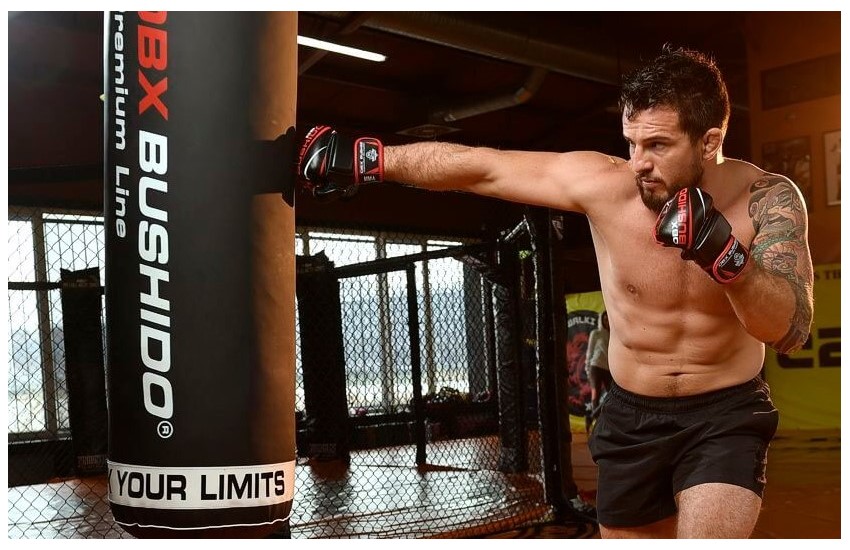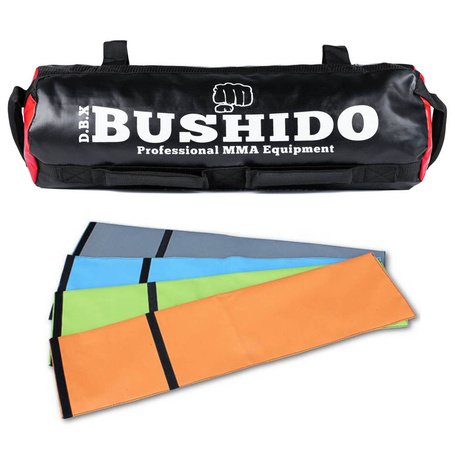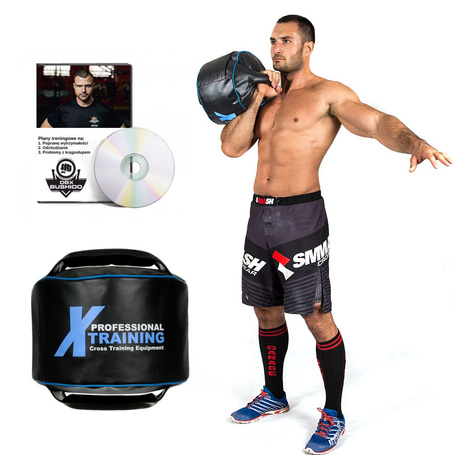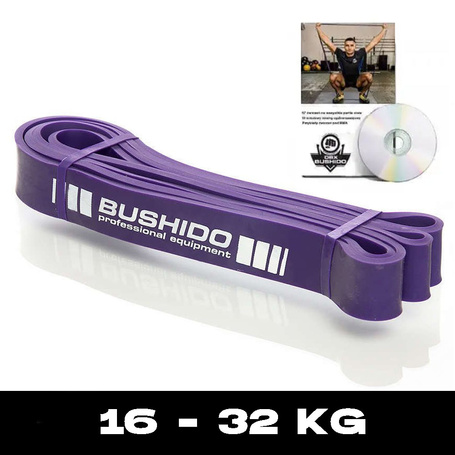MMA training at the gym - what exercises will enhance the form of an MMA fighter?

Motor training is something increasingly obvious in the modern world of combat sports. Sports are at a very high level, and without proper athleticism, it's hard to count on sports success and winning fights.
Although more and more people are realizing the value of motor training, it is not entirely clear to them what such training should properly look like. A sizable number of athletes have bodybuilding-type training encoded in their heads because it used to be the gym's daily bread, and no one questioned the validity of this approach.
The biceps cage workout was sacrosanct and everyone knew that 3 series of 10 repetitions was the optimal value. Is it right? This approach is related to the myth that gym training slows down and is not good for combat sports athletes. And this is indeed the case if we approach training for an MMA fighter as if we were training a bodybuilder.
There is a saying in the world of motor preparation: if you want to be fast, train fast; if you want to be slow, train slow. For a martial arts athlete, training in the gym with a classic split will be too slow and with too many repetitions, which will ultimately slow the athlete down. Too many isolated exercises in a training plan will have a similar effect.
HOW TO TRAIN IN THE GYM UNDER MMA?
To plan correct training for player MMA go to for help to a motor preparation coach, who will help arrange a training plan tailored to the athlete's needs. He will locate weaknesses and arrange the plan in such a way that it does not interfere with combat sports training. Training for the martial arts athlete should be carried out with relatively heavy weights, with more series and fewer repetitions, and exercises should be based on multi-joint movements or those with dynamic potential. Below he presents a sample workout to show how to train and demonstrate some of the qualities that a motor trainer develops in his charges.
SAMPLE TRAINING FOR AN MMA FIGHTER
The plan will be based on exercises in combined series, which will reduce training time, thereby increasing recovery time, which will reduce the risk of overtraining. It will incorporate elements of relative strength (the ratio of strength to body weight) and dynamic strength, two motor characteristics that, properly developed, significantly increase our effectiveness in combat. There will also be exercises designed to protect us from injury.
MMA exercises - training schedule
EXERCISE A1- Barbell throwing on the chest
Series of 6 × 3 repetitions, interval from 150 to 240 seconds, dynamic pace.
This is the main exercise to develop the strength and dynamics of the lower and upper limbs. Our task is to explosively lift the barbell from the ground with the legs and hip enough so that the weight, with the help of the upper limbs, is on our chest. If the movement is done too slowly, it will simply perform a dead pull and moving a heavy weight to the cage, it will become impossible, and this is not the point here. More series and fewer repetitions are supposed to allow us to lift a lot of weight without the risk of excessive fatigue, which would increase the risk of injury.
Exercise B1- Romanian deadlift with barbell and resistance band
Series 3 × 6 repetitions, break 90 seconds, pace 4-1-x-0 (four seconds lower the weight, one second stop the weight at the bottom of the movement, dynamically straighten the body and at the top of the movement do not rest)
Deadlift with resistance rubber, with a slow lowering phase is designed to strengthen eccentric strength, which is very important when wrestling short-circuit. Often the competitor who is simply stronger and more eccentrically and isometrically strong wins the clash. The resistance rubber is designed to force the weight down more aggressively, which definitely increases the resistance we have to fight against, at the moment of the extended eccentric phase.
EXERCISE B2- Plyometric push-ups
3 × 6 repetitions 40 seconds interval dynamic pace
The exercise that we will combine (in a combined series) with an exercise aimed at eccentric strength will be a dynamic exercise for the upper limbs. Such a combination reflects quite well what we may encounter in a fight, that is, after a typical wrestling clinch, we push our opponent away from us and deliver a quick and powerful series of punches. Our task is to bump up as high as possible as we straighten our elbows to generate as much explosive force as possible.
EXERCISE C1- Bulgarian squat
4 × 9 repetitions per side/leg pace 3-1-x-1 (3 seconds descend knee to ground, one second stop movement at bottom, dynamically straighten leg and at top of exercise rest 1 second). 40 second break.
The next combined series will consist of two unilateral exercises, which are valued in motor preparation for equalizing strength disparities between segments, or limbs, strengthening stabilization and stimulating deep muscles, and reducing the risk of injury. The Bulgarian squat is, in character, for strengthening the thigh muscles. The leg that is in front works harder than the rear leg. In this part of the training, the coach focuses on strengthening weak links. If our athlete has problems with the knee joints then, the Bulgarian squat will be perfect for strengthening the tissues surrounding this joint and thus, if performed regularly, will significantly contribute to reducing the risk of injury.
EXERCISE C2- Half barbell roll
4 × 8 repetitions (4 per side) dynamic pace 60 seconds break
The exercise that we combine with the Bulgarian squat is the half barbell roll, a move designed to improve rotation in the torso and hips. From the point of view of a combat sports player, this is a very important movement, because in most of the techniques that are performed in combat sports (whether it is the overthrow of the opponent, or a blow with the arm or leg) everywhere there is a movement of rotation. Exercise has been popularized for good reason by wrestlers preparing for tournaments. Our task is to flip half a barbell from one hip collar to the other, so that the oblique abdominal muscle is worked harder once by one or the other.
EXERCISE D1- Half barbell bench press in a stepped position
3 × 6 repetitions per arm, tempo 2-1-1-0 (two seconds we lower the weight, one second we stop the barbell on our shoulder, one second we press the weight up and without pause we lower the weight), break 60 seconds.
The next exercise will focus on strengthening the strength of the shoulder girdle. The crouched position mimics the low body position often found in MMA fights as we push past our opponent. Another advantage of the stride is that it stabilizes the position and thus improves the stability of the body, which will avoid the athlete's compensation and bending when extending the barbell upward. The half barbell press has another important advantage for combat sports athletes, namely, the movement is not directly vertical, as is the case with the classic overhead barbell press, but more in the horizontal plane. Firstly, the plane is more in line with the movement of the hand when delivering a blow, and secondly, it is less invasive to the shoulder rim and reduces the requirement for mobility, which many fighters lack due to long stays in the guard position.
EXERCISE D2- Face pull
3 × 10 repetitions, tempo 3-1-2-1 (three seconds release the weight in front of you, one second stop the movement to stabilize the position again, two seconds pull the rubber band towards you and one second hold the shoulder blades tense at the end of the movement), break 60 seconds.
The face pull exercise is geared toward improving the strength and dexterity of the shoulder girdle, specifically the work of the shoulder blades, which, for most of the fight and being in the hunchback, are highly stretched and thus weaken in the long run, causing pain and shoulder girdle problems. According to the maxim prevention is better than cure, it is worth weaving in this type of exercise so that you do not fall out of training for a long time due to injury.
The training plan in the long run is selected individually for the athlete, and the factors affecting what training looks like are many. In the test, I outlined a skeleton of what such training should look like and what aspects a motor preparation coach pays attention to.
Instruments that will help you increase the effectiveness of strength training under MMA:
Read also:
WHETHER TRAINING COMBAT SPORTS YOU SHOULD WORK OUT AT THE GYM ?
STRENGTH TRAINING IN COMBAT SPORTS - HOW TO TRAIN AND WHAT MISTAKES TO AVOID
Recommended

WG-161 - GLOVES FOR GYM - FOR EXERCISES - WITH LONG VELCRO AND GRIP-X SYSTEM - L






